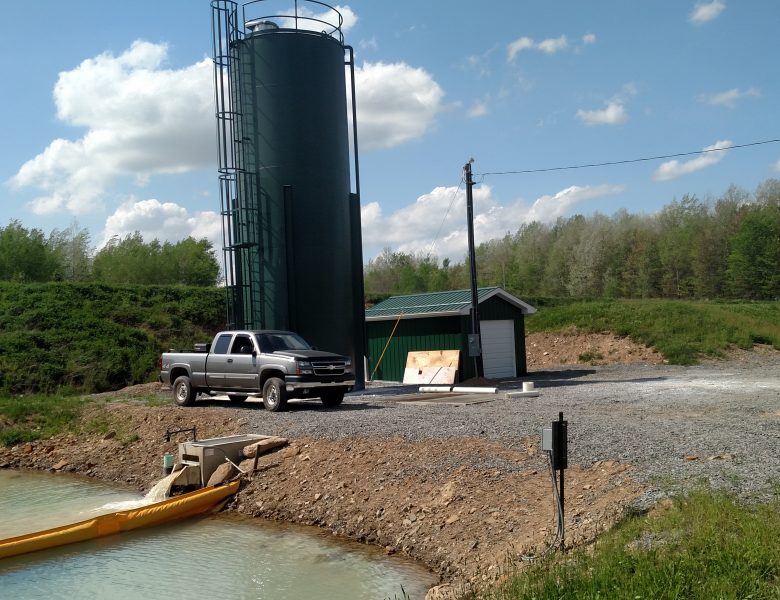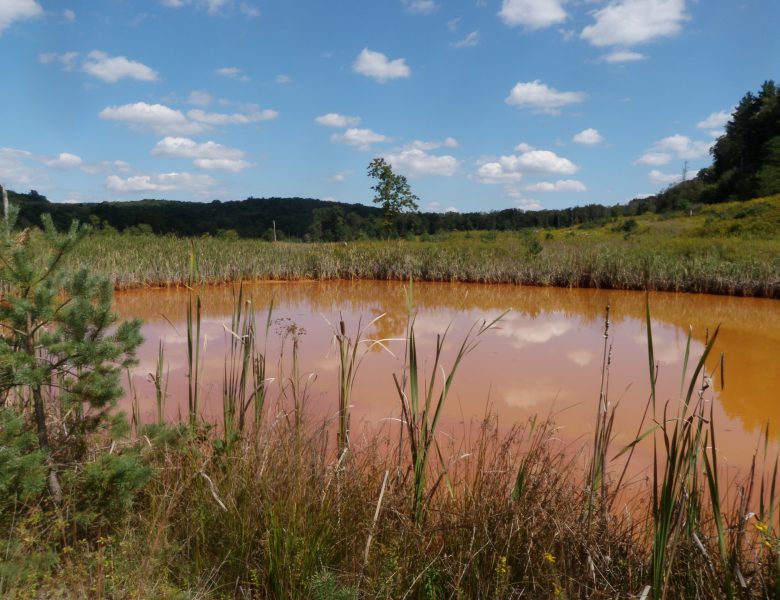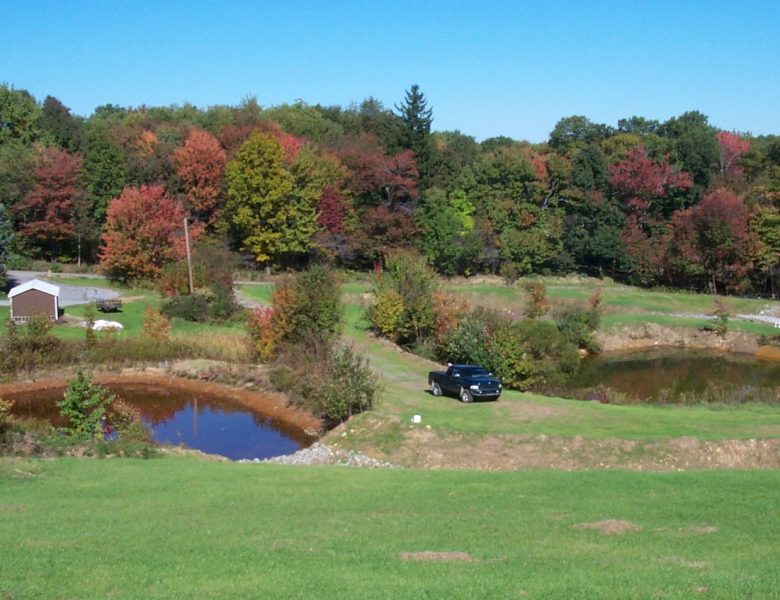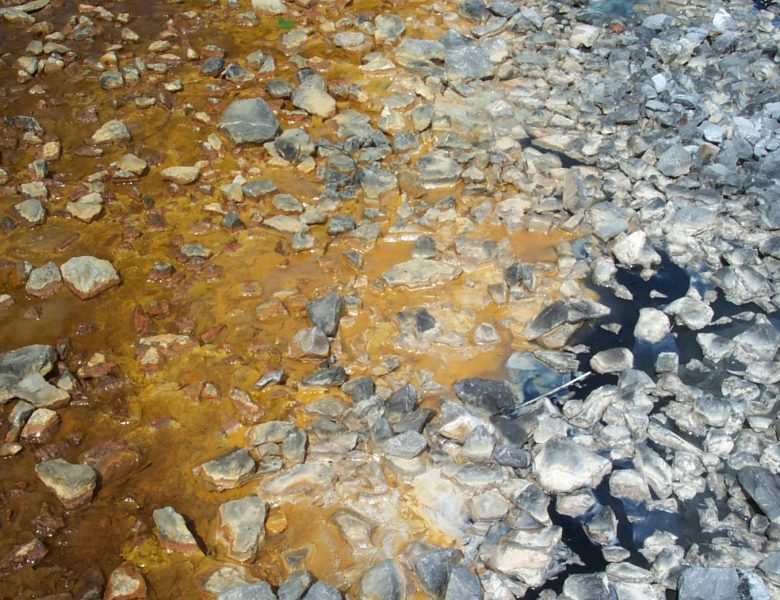Want to know more about AMD, passive treatment, etc? Scroll on down!
What is AMD?
No, we are not talking about the company that makes computer processors. AMD is an acronym that most people use to mean Acid Mine Drainage. AMD is the water that has become polluted from being in contact with a mine. The water is often acidic (but not always), with a depressed (low) pH and higher concentrations of metals such as iron, aluminum, and manganese along with other compounds such as sulfate. Sometimes AMD can be alkaline. Some people use AMD to stand for Abandoned Mine Drainage because usually the biggest problems are from old abandoned mine sites where mining was conducted before there were laws and regulations in place to control how mining was conducted. Because there were no laws to control the mining, typically there is not a company that can be held to be responsible for treating the water. While AMD can certainly be created at new mine sites, a better understanding of science has resulted in the development of modern mining practices that has result in less frequency and severity.

How does AMD form?
The formation of AMD is kind of complex, but you can think of it like a nail or car that is rusting. If you leave a nail outside, eventually it will start to rust. AMD is basically what happens when rocks “rust”. Within the coal or other rock layers, there are all kinds of minerals that can be present. One general type of minerals are sulfide minerals. One of the most commonly known is called pyrite or “Fools Gold”, which is an iron sulfide mineral. When pyrite or other sulfide mineral like it come in contact with oxygen (from the air) and water (from rain, snow, streams, etc) the mineral weathers (breaks down) into iron and sulfuric acid.
4 FeS2 + 15 O2 + 14 H2O -> 4 Fe(OH)3 + 8 H2SO4
Pyrite + Oxygen + Water -> “Yellowboy” + Sulfuric Acid
The iron and acid in the water then attack other minerals which release more metals like aluminum and manganese. As more and more reactions take place, the more polluted the water becomes. Too learn more about the chemistry of AMD check out our links in Additional Resources.
Why is AMD so bad? or Why should you care?
So why is AMD so bad? Well, for starters it pollutes streams and ground water. Before using that water in your home or on a farm or in a factory, it will need to be cleaned so that it is safe to drink or use and not damage pipes or other equipment. Cleaning the water is expensive and usually needs chemicals. But perhaps the most important reason is that AMD is bad for streams. The acids and metals can be toxic to aquatic life like fish and insects. The metals coat the bottom of the stream and ruin the home of where the aquatic insects (called macroinvertebrates) live. These insects are important parts of the stream’s food web. If they die or move away, then there are no food for the fish who then either die or move away. Another reason is that it can be kind of ugly. Who wants to swim in, canoe on, or sit by a stream that looks like this?

What can be done about it?
Once AMD gets started, it is hard to get it to stop. Sometimes, by completing land reclamation projects, you can improve the water, but if it is really bad, you have to treat the AMD. There are two general types of water treatment systems. Traditional chemical based systems (sometimes call Active Treatment) utilizes chemicals such as lime, sodium hydroxide, peroxide, etc and often contain mixers, pumps, and aerators that use electricity. An alternative to chemical treatment is Passive Treatment. Passive Treatment is a more environmentally-friendly way to treat water that uses natural materials such as limestone, compost, plants, and bacteria in different combinations to encourage naturally-occurring chemical, physical, and biological processes to take place. Typically, passive treatment do not use electricity, although some have been known to utilize solar and water powered technologies. Both types of treatment are valuable tools in the toolbox to treating water. Too learn more about Active and Passive Treatment, check out our links in Additional Resources.







